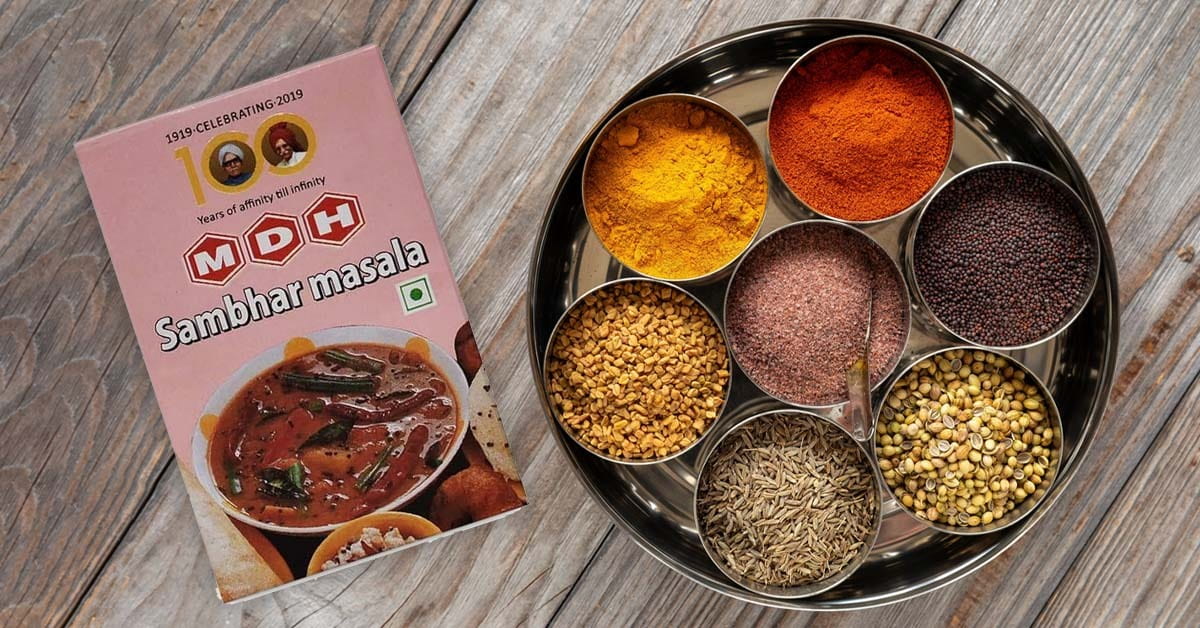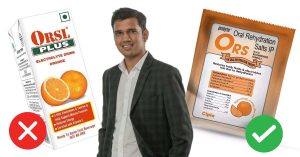MDH & Everest Spice Row Explained: How to Read Ingredients on Masala Packets?
With four of MDH and Everest group's spices coming under the scanner by the food safety agencies in Singapore and Hong Kong, here's all that you need to know about ethylene oxide, the component stirring the pot.

Do store-bought masalas (spices) contain a cancer-causing substance?
After Hong Kong and Singapore placed four masalas from MDH and Everest under the scanner, food safety regulator FSSAI (Food Safety and Standards Authority of India) will now conduct quality checks on products of these two popular spice brands.
On 5 April, Hong Kong’s food safety regulator, The Centre for Food Safety (CFS) found the presence of a pesticide, ethylene oxide in these masalas. The US EPA (Environmental Protection Agency) states that ethylene oxide is carcinogenic and can cause cancer through long-term exposure.
The masalas under contention are MDH’s ‘Madras Curry Powder’, ‘Sambhar Masala Powder’, ‘Curry Powder’ and Everest’s ‘Fish Curry Masala’ . The Singapore Food Agency found the pesticide in Everest’s ‘Fish Curry Masala’ as well.
Now, FSSAI has started taking samples of various spices from the market to check their quality and presence of the cancer-causing chemical.
“In view of the current development, FSSAI has taken samples of spices of all brands, including MDH and Everest, from the market to check whether they meet the FSSAI norms,” the source told PTI.
Here’s a guide on how you can safeguard yourself and know what you consume.
What is ethylene oxide?
During a routine surveillance, the CFS collected the said MDH and Everest masala samples from three retail outlets in Hong Kong, leading to the discovery of ethylene oxide’s presence above the permissible limits.
In its report, it adds that The International Agency for Research on Cancer has classified ethylene oxide as a Group 1 carcinogen.
Ethylene oxide is an organic compound used primarily to produce other chemicals, and is also used as a sterilising agent for medical equipment, pesticide and a fumigating agent for spices.
Its presence lends a longer shelf life to food products. The EPA states that ‘ethylene oxide is carcinogenic to humans by the inhalation route of exposure’, and increases the risk of lymphoid and breast cancer.
After the CFS found the presence of this carcinogen, it instructed the vendors to remove the products from the shelves and asked the concerned distributors and importers to recall the affected products.
It also asked consumers not to buy the products.
Meanwhile, the Singapore Food Agency has directed a recall of the products. Its report states that while ethylene oxide is allowed to be used in the sterilisation of spices, here its presence is above the accepted limits.
“Although there is no immediate risk to consumption of food contaminated with low levels of ethylene oxide, long term exposure may lead to health issues. Therefore, exposure to this substance should be minimised as much as possible,” the report adds.
How to read food/ingredient labels
While this news comes on the back of finding that Nestle adds sugar in Cerelac, or the Ministry of Commerce and Industry directing e-commerce firms to remove Bournvita and other such drinks from the health drinks category, this underscores the need for consumers to be more alert and look at food labels before buying any product.
In an earlier conversation with The Better India, Revant Himatsingka, a nutrition consultant who goes by ‘foodpharmer’ on Instagram, had highlighted a few important points to keep in mind while reading food labels:
- Avoid products that have complicated ingredients:
“If you can’t recognise or pronounce ingredients in a product, it’s not good for you. Buy the product in which you can understand the ingredient,” he adds.
- Ingredients are listed in order of their weight:
“The first ingredient is the one that is present the most in the packet. So if you’re buying biscuits, the first three ingredients usually will be maida (refined wheat flour), palm oil and sugar,” he says.
- Buy items that have less than five ingredients:
“Try to stay away from products that have more than five ingredients. As the ingredient list increases, it’s inversely proportional to the nutritional benefits.”
- Go For Homemade/Natural Food
“Ultimately, the healthiest foods are the ones without any labels,” he adds.
With unlimited access to resources, the best thing we can do for our health is to stay updated and informed about what we consume. There are multiple ways for us to inculcate safe practices and avail homemade options as well. Having the knowledge of which ingredients work best for us and which to stay away from can definitely help us in the long run. If you found our stories insightful, informative, or even just enjoyable, we invite you to consider making a voluntary payment to support the work we do at The Better India. Your contribution helps us continue producing quality content that educates, inspires, and drives positive change. Choose one of the payment options below for your contribution- By paying for the stories you value, you directly contribute to sustaining our efforts focused on making a difference in the world. Together, let’s ensure that impactful stories continue to be told and shared, enriching lives and communities alike. Thank you for your support. Here are some frequently asked questions you might find helpful to know why you are contributing?

(Edited by Padmashree Pande)
Sources:
US EPA
This story made me
- 97
- 121
- 89
- 167













